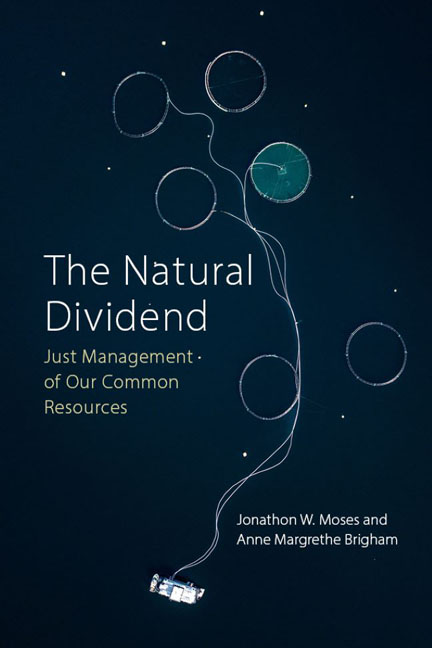Book contents
- Frontmatter
- Dedication
- Contents
- Acknowledgements
- Abbreviations
- 1 Introduction
- 2 Who owns the sun?
- 3 The Natural Dividend
- 4 The earth: the market for land
- 5 The sea: the market for salmon
- 6 The sky above: the market for renewable energy
- 7 The earth beneath: the market for fossil and mineral resources
- 8 A common market? The market for global resources
- 9 Conclusion
- References
- Index
4 - The earth: the market for land
Published online by Cambridge University Press: 20 January 2024
- Frontmatter
- Dedication
- Contents
- Acknowledgements
- Abbreviations
- 1 Introduction
- 2 Who owns the sun?
- 3 The Natural Dividend
- 4 The earth: the market for land
- 5 The sea: the market for salmon
- 6 The sky above: the market for renewable energy
- 7 The earth beneath: the market for fossil and mineral resources
- 8 A common market? The market for global resources
- 9 Conclusion
- References
- Index
Summary
We begin by considering how to manage the markets for land, and its products. These markets are the most established and the most familiar, but probably also the most varied. There are several reasons why the market for land often serves as a point of departure for thinking about how other resource markets should be managed. One reason may be that we all have a relationship to how property in land is bought and sold in the place where we live. Another reason may be because land ownership has played such an important role in the way we think about man-aging nature, individual liberty and the role of government in the Western world. Yet another reason may be that most natural resources are located on, around or under the land – so controlling access to the land often means controlling access to valuable natural resources.
The total amount of available land on the earth (minus Antarctica) is roughly 33.7 billion acres (see Table 4.1). We use the acre here as our measure, as it offers a convenient mental measuring unit, covering roughly the size of a football pitch. We also know that the world population in 2019 was 7.7 billion. If equally divided, then, each person on the globe would enjoy a little more than 4.4 acres of land. Not all this land is equally productive, and much of it cannot be used for agricultural purposes. The World Bank (2021a) estimates that less than 12 billion acres (c. 48 million km2) could be counted as farmland in 2018 – that is, under a third of the total amount of land available.
In other words, farmland is relatively scarce, and global population growth will exacerbate that scarcity. From Figure 1.2 we learned that the world can expect 9.7 billion inhabitants in 2050. Every one of these individuals will need to find food, clothing and shelter from the land. Under optimal conditions, it might be possible to generate the caloric needs of 10 billion people on just 6 billion acres of land – but we also need land to feed animals, produce biofuels, sequester atmospheric carbon dioxide, grow timber, cotton and other clothing fibres, and so on.
- Type
- Chapter
- Information
- The Natural DividendJust Management of our Common Resources, pp. 77 - 106Publisher: Agenda PublishingPrint publication year: 2023



